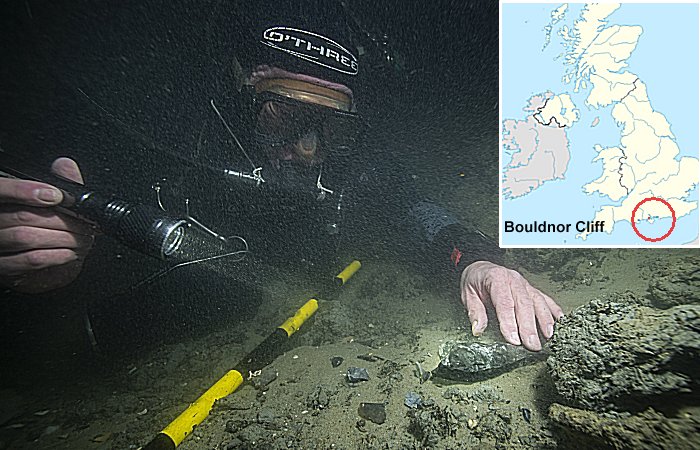Conny Waters - AncientPages.com - The goal of this underwater scientific expedition is to preserve history.
Image Credit : University of Warwick
The expedition wants to uncover the submerged prehistoric settlement before the erosion claims its complete and irreversible loss.
According to Professor Robin Allaby, the esteemed scholar leading the expedition, it is an unparalleled opportunity to gain invaluable insights into the enigmatic and unknown realm that witnessed the emergence of the Mesolithic era.
It is however, not much time left before the site is lost.
The submerged Bouldnor Cliff site, a Stone Age archaeological treasure trove situated in the Solent off the Isle of Wight, may shed light on the Mesolithic era in Britain and its cultural ties to the European continent.
The application of cutting-edge DNA research techniques to the artifacts and remains unearthed from this underwater site will play a pivotal role in advancing our understanding of this vital period in human history.
The period when rising sea levels isolated Britain from continental Europe yielded evidence at the site that indicates the presence of technology remarkably advanced for its era, approximately 2000 years ahead of its time.
Image Credit : University of Warwick
This evidence suggests intriguing connections to European stone tool manufacturing techniques and agricultural produce. It creates interesting questions about the extent of cultural exchange and technological diffusion during that epoch.
The remarkable archaeological discovery of an 8000-year-old settlement, shows evidence of ancient boat-building activities that has been gradually unearthed over the past two decades,as the erosion of sediments in the Solent region has progressed.
Professor Allaby of the University of Warwick has assembled a Leverhulme Trust funded team with Garry Momber (CEO of the Maritime Archaeology Trust, Southampton) and Dr Tim Kinnaird (University of St. Andrews) to reveal the secrets of Bouldnor before they are all lost.
“This is an exciting research project to showcase the new innovations in luminescence dating, which can tell when an object was last exposed to the Sun," said Dr Kinnaird.
The relevance of this technique in writing the narratives for 4000 years of history, at the time that the British coastline was rapidly changing, is huge!”
The team will conduct cutting-edge palaeoenvironmental study of the site and the broader Solent region. Utilizing several pioneering methodologies, the researchers will try to reconstruct the past environment.
Additionally, they will undertake the recovery of archaeological artifacts and environmental markers, such as pollen and diatoms, to further elucidate the historical environmental conditions.
The team aims to determine what the late Ice Age environment in which the Mesolithic developed was like. To what extent the people of Bouldnor Cliff were in contact with Europe exchanging materials such as exotic flora?
Such findings have the potential to revolutionise our understanding of this period when island Britain was formed. This important study has a crucial goal to understand how it evolved from the late Ice Age to the Mesolithic period and beyond.
Written by Conny Waters - AncientPages.com Staff Writer
